tuning blog 1 April 2021 Tips, products, information & Co., Tuning Wiki
If you are interested in a new set of rims and do not necessarily have a typical standard size such as 7,5j x 17 inches in mind, you may already have heard of the term Tire stretch / tire stretching belongs. But what does Tire Stretch / Tire Stretching actually mean? With regard to the topic, the information in advance, many possibilities in this area are only "outside“The STVZO allows. But only as an indication and not as a flat rate! If there is a corresponding tire approval from the tire manufacturer, nothing speaks against one legal use. Mentioned in the release is the corresponding tire size for use on the rim. The exact dimensions are listed there. Incidentally, it is not the diameter that is relevant for the tire stretch, but the one
Width, the Flank height and the Rim width. How do you get that stretch? Example: the tire has the dimension 255/35 R18 and the rim has the dimensions 10 × 18 inches. So the tire is 255 mm wide and the rim 254 mm. This format is known as level 0! Tire and rim are almost identical and the tire is very straight on the rim.
To achieve a tire stretch you can use the tire width and the Flank height to a certain extent "play". For example, do you want one Level 1 stretch then you pull a 10/18 R245 tire on the aforementioned 35 × 18 inch rim, or if you want to stay with the 255, then you have to Reduce flank height and put on a 255/30 R18, for example. Both cases allow a stretch of the Level 1. This is a variant that is listed in most reports and therefore can also be used legally and looks good. To any Space problems in the wheel arch perhaps that is one way to fix it.
In principle you can reach that Level 2by taking the dimensions of the tire further down changed.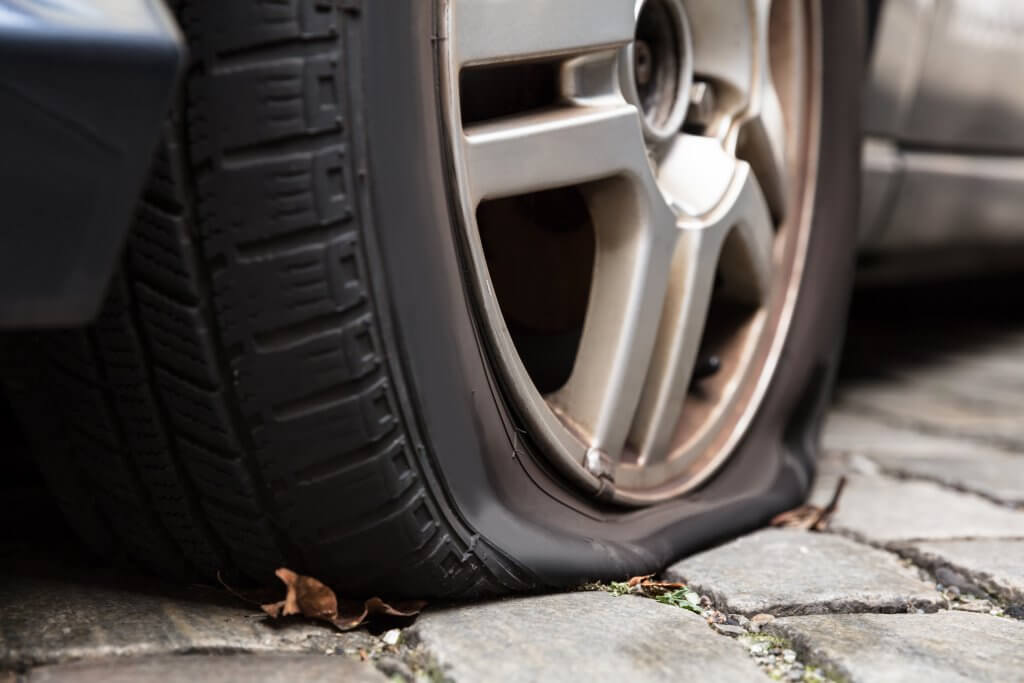 Based on our 10 × 18 inch rim, for example with the tire format 235/35 R18, 245/30 R18 or 255/25 R18. The greater the changes, the greater the changes, of course Rolling circumference. However, this is crucial for the accuracy of the speed display and should must be strictly observed. You should also keep in mind that the tire wall always small becomes and with it the driving comfort and the ground clearance dwindle. Contemporaneous increased also the possibility in terms of Damage on the rim. A possible one flank protection (Rim rib) on the tire then has hardly any effect.
Based on our 10 × 18 inch rim, for example with the tire format 235/35 R18, 245/30 R18 or 255/25 R18. The greater the changes, the greater the changes, of course Rolling circumference. However, this is crucial for the accuracy of the speed display and should must be strictly observed. You should also keep in mind that the tire wall always small becomes and with it the driving comfort and the ground clearance dwindle. Contemporaneous increased also the possibility in terms of Damage on the rim. A possible one flank protection (Rim rib) on the tire then has hardly any effect.
Again and again starting from our 10 × 18 inch rim you reach the Level 3 to even further reduced dimensions from the tire. For example with 225/35 R18, 235/30 R18 or 245/25 R18. Level 3 reduces the tire size of level 0 by three units. At this point at the latest, the issue of permissibility in road traffic must be examined very carefully. Usually level 3 no longer in traffic usable because, apart from the scope, there is also the possibility of Slipping of the tire opens on the rim.
Level 3 reduces the tire size of level 0 by three units. At this point at the latest, the issue of permissibility in road traffic must be examined very carefully. Usually level 3 no longer in traffic usable because, apart from the scope, there is also the possibility of Slipping of the tire opens on the rim.
Would you like to go further and get one Level 4 tire stretch reach that is how one speaks of Japanese Sudani style. Here the tire is pulled so far apart that the flank height is barely there and the rim flange partially touches the road. Level 4 is reached with accordingly strong reductions in tire width / sidewall height.
If you attach particular importance to high performance, you should make sure that the tire is on the rim can move.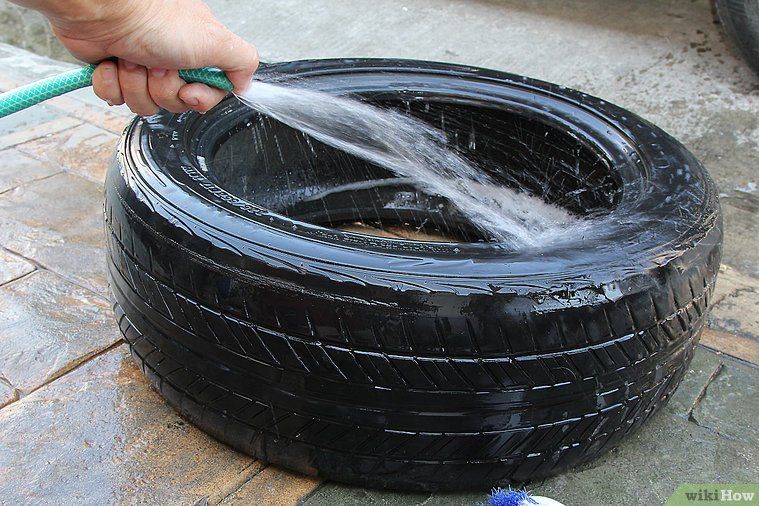 This can be achieved with a "negative tire stretch". This can be achieved by starting from level 0 (Example: 255/35 R18 and 10 × 18 inch rim) the dimensions of the tire are not reduced, but increased. Here it goes into the minus range. For example Step 1: 265/35 R18 or 255/40 R18 on the 10 × 18 inch rim. Step 2 is correspondingly higher but for the racetrack then already no longer suitable. Here the tire becomes unstable and the driving behavior deteriorates significantly. It also looks ugly. And that too Rolling circumference is to be observed here again. The whole topic is well explained again in the following video by West Berlin Customs, from which we also have our information.
This can be achieved with a "negative tire stretch". This can be achieved by starting from level 0 (Example: 255/35 R18 and 10 × 18 inch rim) the dimensions of the tire are not reduced, but increased. Here it goes into the minus range. For example Step 1: 265/35 R18 or 255/40 R18 on the 10 × 18 inch rim. Step 2 is correspondingly higher but for the racetrack then already no longer suitable. Here the tire becomes unstable and the driving behavior deteriorates significantly. It also looks ugly. And that too Rolling circumference is to be observed here again. The whole topic is well explained again in the following video by West Berlin Customs, from which we also have our information.
PS: Incidentally, you can reach all levels, even if you leave the tire the same, but change the width of the rim accordingly. So 12 × 18, 13 × 18 etc. As mentioned, the diameter plays not matter!
Sudani styleWe hope that you have received our information report on the topic / term Tire stretch (Other terms / keywords are: negative tire stretch, negative tire stretch, negative tire stretch, negative tire stretch, wheel stretching, wheel stretching, tire stretching, tire pulling, tire stretching, stretch tire, stretched, stretching, level -1 stretch, level -2 stretch , Level 0 Stretch, Level 1 Stretch, Level 2 Stretch, Level 3 Stretch, Level 4 Stretch, Level Principle, Level Principle, Sudani Style, Tire-stretch, Tire Stretching, Tyrestretch
) from the Autotuning category.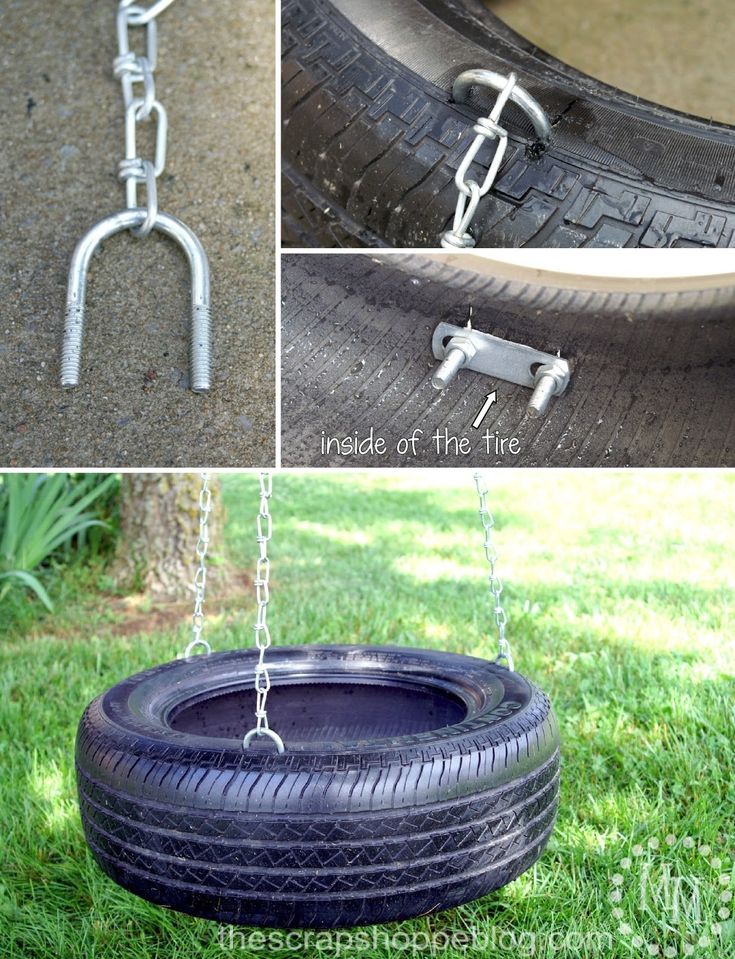 Our goal is to have the largest German-speaking tuning lexicon (Tuning Wikipedia) and to explain tuning technical terms from A to Z easily and understandably. We are therefore expanding this lexicon almost daily and you can see how far we have already come HERE see. And soon the next one will be Tuning scene concept illuminated by us. There's a theme that rather can be found in our Wikipedia? Then send us an email at [email protected] and gives us the term. We will write a suitable article as soon as possible. PS. By the way, you will be informed about new topics if you have ours Feed subscriber.
Our goal is to have the largest German-speaking tuning lexicon (Tuning Wikipedia) and to explain tuning technical terms from A to Z easily and understandably. We are therefore expanding this lexicon almost daily and you can see how far we have already come HERE see. And soon the next one will be Tuning scene concept illuminated by us. There's a theme that rather can be found in our Wikipedia? Then send us an email at [email protected] and gives us the term. We will write a suitable article as soon as possible. PS. By the way, you will be informed about new topics if you have ours Feed subscriber.
But of course tuningblog has countless other articles on the subject of cars & car tuning in stock.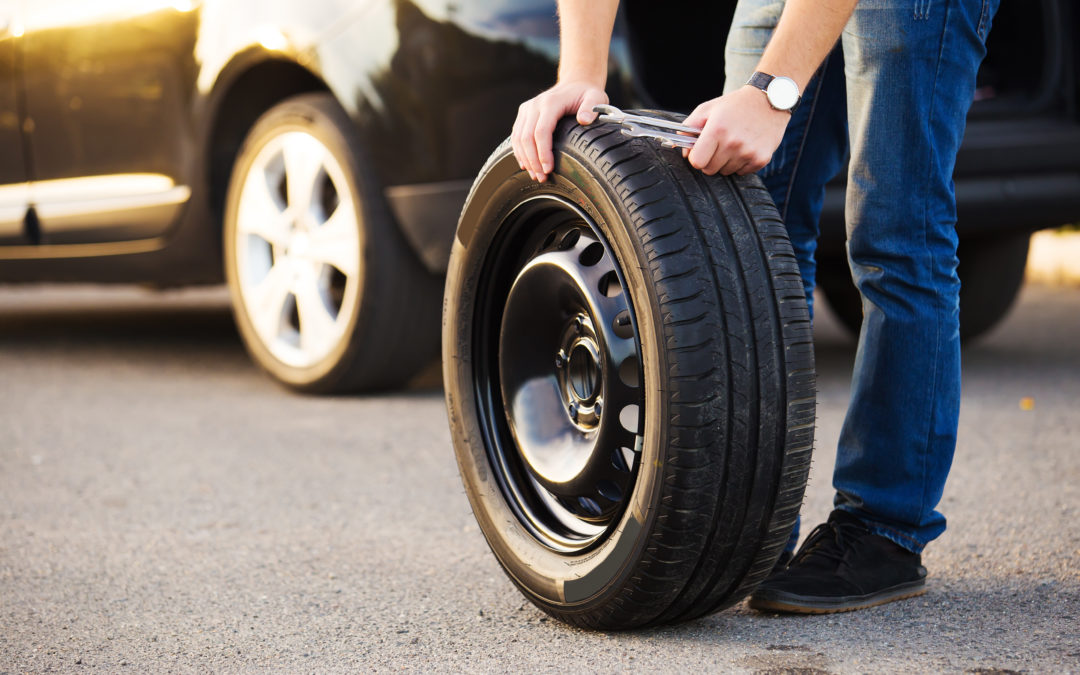 Do you want to see them all? Just click HERE and look around. We would also like to provide you with news aside from the tuning. In our category Tips, products, information & Co we pick up contributions from car or accessory manufacturers. And also our category Test sites, laws, offenses, information has almost daily new information for you. Here are a few topics from our tuning wiki:
Do you want to see them all? Just click HERE and look around. We would also like to provide you with news aside from the tuning. In our category Tips, products, information & Co we pick up contributions from car or accessory manufacturers. And also our category Test sites, laws, offenses, information has almost daily new information for you. Here are a few topics from our tuning wiki:
"Tuningblog.eu" - we keep you up to date on the subject of car tuning and car styling with our tuning magazine and we present you the latest tuned vehicles from all over the world every day. It's best to subscribe to ours Feed and will automatically be informed as soon as there is something new about this post, and of course also to all other contributions.
When you go to shows you'll see almost every truck with practically no sidewall on the tires. We get so many questions about these. Are they safe? Are they legal?
We get so many questions about these. Are they safe? Are they legal?
WHEEL / TIRE PACKAGES
SEE MORE PHOTOS HERE
What is a Stretched Tire?
Why Do People Stretch Tires?
Is Stretching Your Tires Safe?
Is it Legal?
Popular Tires to Stretch
So… Should You Stretch Your Tires?
A stretched tire refers to a tire that has a smaller width than the wheel it's being mounted on.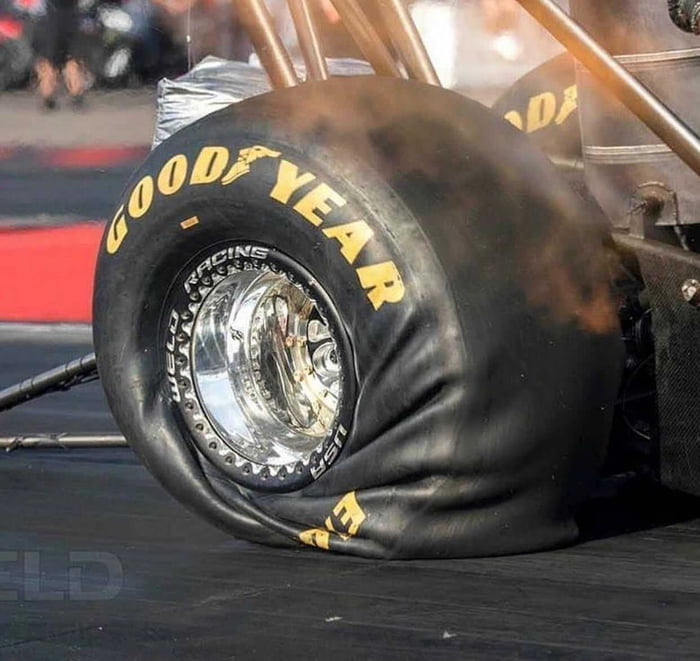 Typically ranging from 1-3 inches in difference. This results in the sidewall stretching to the edge of the wheel giving a very unique show-style look. Made to look risky and dangerous, this is the appeal of the stretched tire.
Typically ranging from 1-3 inches in difference. This results in the sidewall stretching to the edge of the wheel giving a very unique show-style look. Made to look risky and dangerous, this is the appeal of the stretched tire.
SEE MORE PHOTOS
You can do a mild stretch all the way up to a super aggressive stretch on your tires. But why do it?
As stated earlier, it is generally for aesthetic purposes only. It doesn't provide any sort of performance benefit in any way for your truck. So we can assume this is only for looks and to keep your build looking show-ready at all times. The only other reason that we have heard of people stretching their tires is that they want to save a buck on smaller tires.
SHOP TIRES
Starting in the car world, this trend became very common.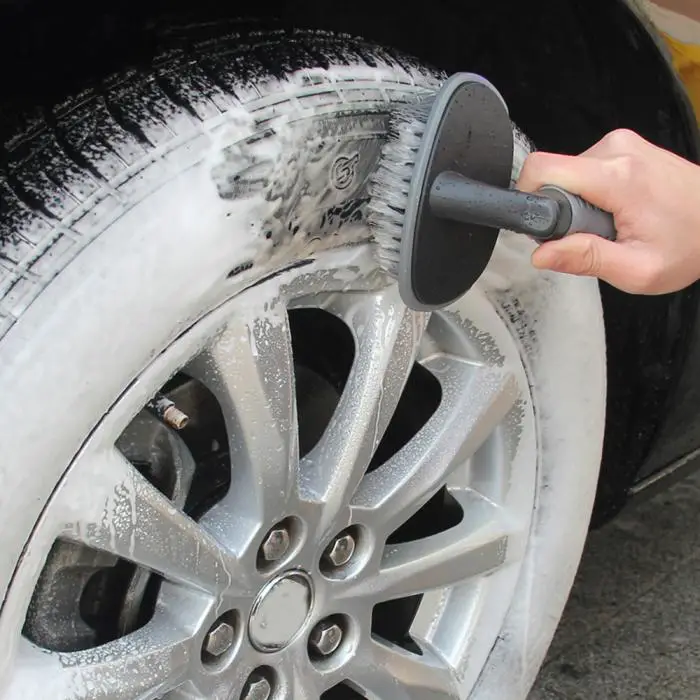 Moving into the truck world, there is a lot more weight to consider on the said tires. Now, it isn’t necessarily inherently dangerous to stretch your tires. In and of itself it is not dangerous.
Moving into the truck world, there is a lot more weight to consider on the said tires. Now, it isn’t necessarily inherently dangerous to stretch your tires. In and of itself it is not dangerous.
However, there are some things to note. First of which is that you can much more easily pop your tire. When you stretch a tire there is excess stress and heat on the tire making it easier to puncture, cut, or tear. You are also more prone to de-beading and deflating as well.
Another thing to note is that with stretched tires and little to almost no sidewall, there is no protection for your wheels. One curb at the wrong time and place, and just like that, your wheels are ruined.
All of this depends on the amount of stretch that you decide to go with. We do not encourage this choice, however, we do understand it. You gotta do what you gotta do for the perfect show look and setup sometimes.
You gotta do what you gotta do for the perfect show look and setup sometimes.
*Get this wheel here.
Most companies won't stretch tires for you. But we will mount and balance those stretched tires for free on your wheels when you get a wheel and tire package and ship them straight to your door.
SEE MORE PHOTOS
Take a look at your individual state for if stretching your tires is legal. It tends to be in the “gray area”. It is generally frowned upon, however not illegal in most cases. Be careful with your insurance though because it has been said that some people have gotten their insurance voided or rejected because of stretched tires.
SEE MORE PHOTOS
Here are some popular brands of tires that get stretched:
SHOP these brands
At the end of the day, it is up to you if you want to stretch your tires. If that's the look you want to achieve then go for it, just be safe about it. Know the risk involved and drive carefully. It is a look that we love, but we do understand that there is risk involved.
If that's the look you want to achieve then go for it, just be safe about it. Know the risk involved and drive carefully. It is a look that we love, but we do understand that there is risk involved.
get tires here
SHOP WHEEL / TIRE PACKAGES
see more photos
CHECK OUT MORE BLOGS HERE
STRETCHED TIRESTIRESWHEEL AND TIRE PACKAGE
Outdated browser detected Unfortunately we do not support Internet Explorer. We recommend that you use Google Chrome, Mozilla Firefox, or Microsoft Edge.
We recommend that you use Google Chrome, Mozilla Firefox, or Microsoft Edge. Tuning spreads along the roads of Russia at the speed of lava after the eruption of Vesuvius. Thousands of official dealers, network services and garage workshops will willingly take on the transformation of a car, whether it is a domestic “classic” at the price of a TV or a premium sedan that costs the price of a good apartment in the capital. Hundreds of exhibitions, festivals and competitions are held annually throughout the country. But does all this mean that there are no "white spots" on the tuning map? No. Now we will talk about a popular phenomenon, which, nevertheless, still raises many questions - tire preload, or stretch.
Now we will talk about a popular phenomenon, which, nevertheless, still raises many questions - tire preload, or stretch.
The word "stretch" is a Russian transcription of the English stretch - "pull", and is pronounced similarly. The common spelling "stretch" is a misnomer. Simply put, rubber is a “house” when a tire of a smaller width is put on a disk than is calculated by the manufacturer. For example, a 195mm tire instead of a 255 on a 9" wide rim. This is achieved by tensioning the sidewalls of the tire, the so-called profile. Now the profile is not perpendicular to the contact patch, but is at an obtuse angle.
How blunt is determined by the amount of interference, and it, in turn, depends on several factors: the difference in the width of the disk and tire, the height of the profile, the tire manufacturer and a number of others, but more on that later.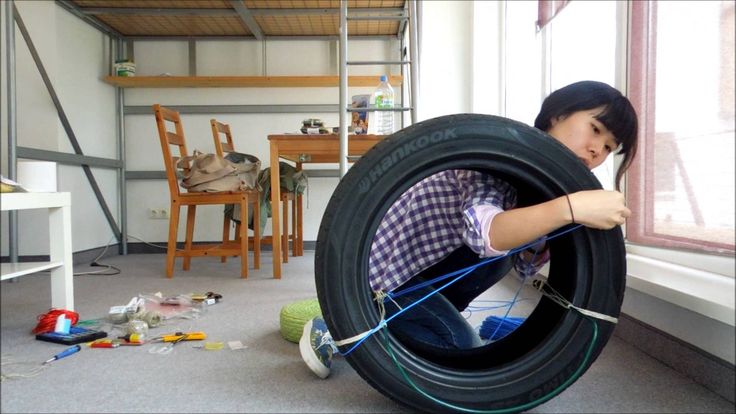 In most cases, when stretching, the inner and outer edges of the disc bulge outward. Now that you associate the word "stretch" with more than just jeans, it's time to answer the main question.
In most cases, when stretching, the inner and outer edges of the disc bulge outward. Now that you associate the word "stretch" with more than just jeans, it's time to answer the main question.
Depending on the area of use, the answer to this question will be different. Below is a complete list of the "pros" and "cons" of stretch, now we will talk about primary sources. Historically, the method of stretching narrow tires on a wide disk appeared almost simultaneously in Germany and Japan at the end of the last century. But if in the east the cause was drift , then in the old world it was legislation, or rather attempts to get around it.
In Germany and Belgium, the law prohibits the operation of cars if the contact patch is outside the arches - this left no choice for lovers of a wide gauge. By pushing the disc out of the fenders, the stretch allowed the tire to stay inside and everyone was happy. As for drifting, the tension is appropriate here for several reasons: a narrow tire is easier to break into a skid, it costs less, and due to the “house” it breaks less under lateral loads that occur in sliding.
As for drifting, the tension is appropriate here for several reasons: a narrow tire is easier to break into a skid, it costs less, and due to the “house” it breaks less under lateral loads that occur in sliding.
Decades later, all the reasons were intertwined, and now light stretch can be found even on some cars coming off the assembly line, such as the Infiniti Q60, but it was most widely used in the stens style.
In order not to get confused, it's time to put together all the terms related to stretch. "Stens" (from English stance - "landing", "posture", "posture") is a style in which stretch is used in most cases. According to his canons, the car should be pressed to the ground as much as possible, and the wheels to the arches. The latter has its own name - “fitment” and denotes the relative position of the disk, tire and wheel arch, or fender (wheel arch extension).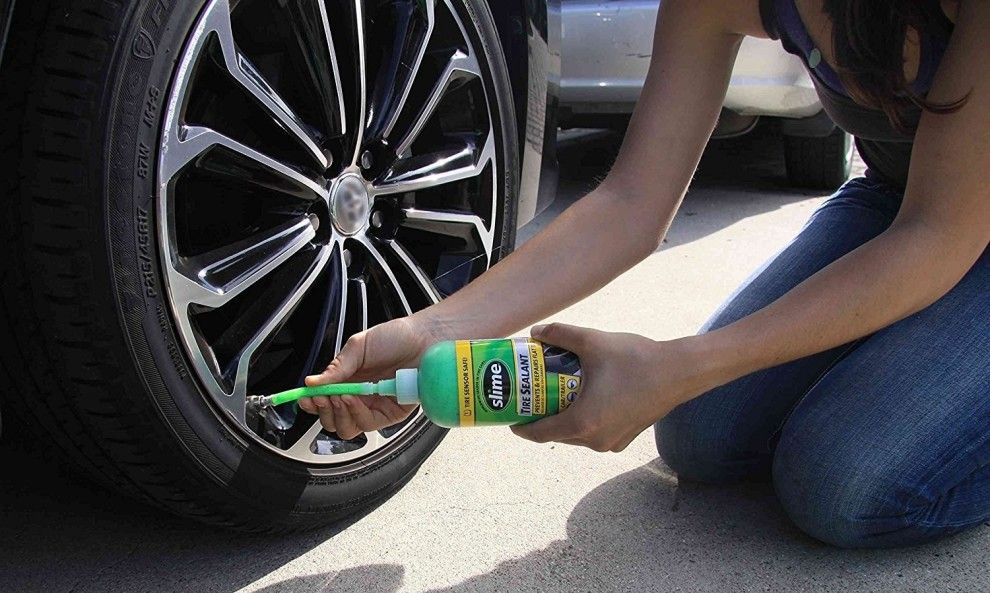
Such a fitment is considered ideal when the edge of the wheel arch is in the gap formed during a strong stretch - it is called a poke. The latter is often possible only when using an air suspension, which allows you to raise the car while driving, saving the arches from contact with the disk. Examples of a static, that is, without height adjustment, fitment are distinguished by a larger “rim gap” (rim gap is the distance from the edge of the disk to the wheel arch). Due to the operation of the suspension, the rim gap of a static car can range from a few millimeters (with an extremely stiff suspension) to five centimeters. In any case, the stronger the tightness, the more likely it is to secure the wheel arch and achieve a better appearance.
Let's say you've made the decision to stretch. What is needed for this? First, define your goals. If this is drifting or another sports discipline in which handling is at the forefront, then you should start by looking for tires in the right parameters, after which the required disk width will become clear.
What is needed for this? First, define your goals. If this is drifting or another sports discipline in which handling is at the forefront, then you should start by looking for tires in the right parameters, after which the required disk width will become clear.
Example: for track days, tires of dimension 225/40 R18 are selected, the recommended wheel width for which is 7.5 inches. Increasing the width of the disk by an inch, we get a slight tightness, and by two or three - a strong one.
On the contrary - if the appearance is more important than driving characteristics, then we are looking for discs of the maximum width that the wheel arches can accommodate. Suppose it is 10 inches in the seventeenth diameter. It is recommended to install tires of at least 275 millimeters on them, which means that a width of 245 or less is suitable for stretch.
It should be borne in mind that the height of the tire profile has an almost stronger effect on the ability to preload than its width.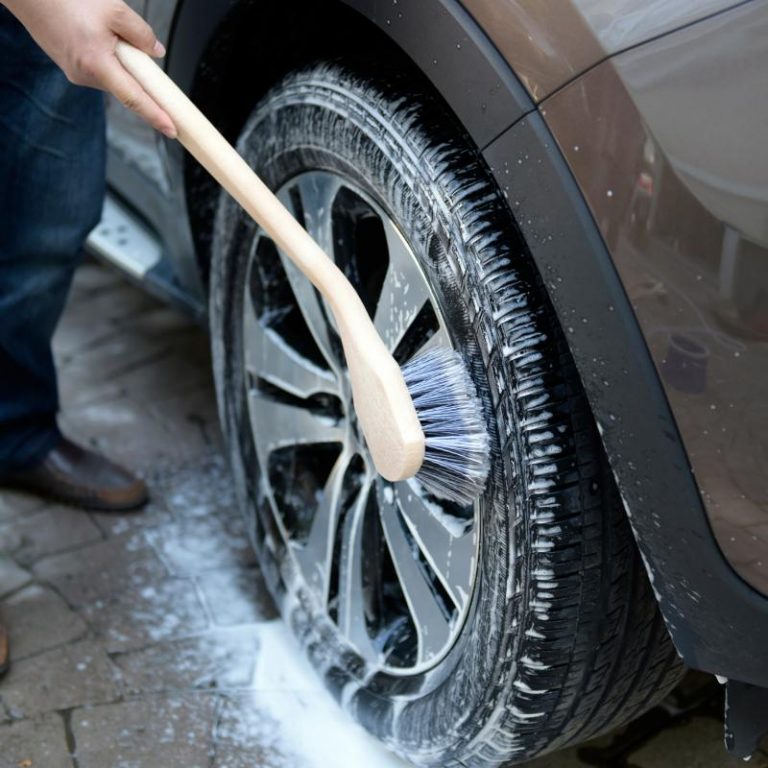 Low-profile tires have stiffer sidewalls, which make them harder to stretch, but give more effective stretch compared to 50% or more profile height.
Low-profile tires have stiffer sidewalls, which make them harder to stretch, but give more effective stretch compared to 50% or more profile height.
In order to understand the variety of sizes, enthusiasts create entire photo libraries, the most popular of which is tyrestretch.com. The name that speaks for itself will allow you to decide on the size and model of tires without resorting to experiments - hundreds of people have already tried different combinations. But even in spite of this, the choice can turn into an epic: tires of the same marking, but from different companies, can differ markedly in size, composition and characteristics. Decided? Buy.
Alas, the purchase of stretch wheels is no less “exciting” than the choice. Let's start with disks - it's easier with them.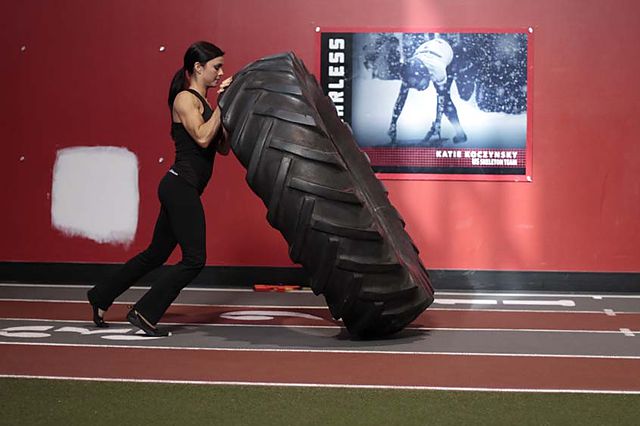 The only defining parameter here is the width. There is also a departure, but it has nothing to do with tightness, so we will not dwell on it. The rest is determined by personal preferences and budget: stampings or forged composites, new or used, ready-made version or "custom" in a single copy.
The only defining parameter here is the width. There is also a departure, but it has nothing to do with tightness, so we will not dwell on it. The rest is determined by personal preferences and budget: stampings or forged composites, new or used, ready-made version or "custom" in a single copy.
With tires it is more difficult, and even if we are talking about new ones. The fact is that “new” often means opposite things: produced a few months ago or never put on wheels. The latter may be ten years old - despite the fact that the shelf life of car tires is five years. Information about the production date is located on the sidewall of the tire and consists of four digits, the first two of which are the week of manufacture, and the second are the year.
If for some reason the choice falls on used tires, among other things, you need to pay attention to the condition of the toe - this is the inside of the bead. It should be free of cuts and cracks, as it ensures the tightness of the "stretched" tire. Without stretch, damage to the toe is not critical, because the tire is adjacent to the disk with the entire plane of the bead. You should also pay attention to the geometry of the inner ring - its curvature due to improper storage will prevent you from pulling a narrow tire on a wide rim. Finally, when everything is bought, the most interesting thing lies ahead.
It should be free of cuts and cracks, as it ensures the tightness of the "stretched" tire. Without stretch, damage to the toe is not critical, because the tire is adjacent to the disk with the entire plane of the bead. You should also pay attention to the geometry of the inner ring - its curvature due to improper storage will prevent you from pulling a narrow tire on a wide rim. Finally, when everything is bought, the most interesting thing lies ahead.
It is better to assemble wheels where they have experience in explosion and installation of non-standard sizes. If you do not approach the choice of a tire shop carefully, at best you risk simply not putting the tire on the rim, and at worst - damaging both. Let us focus only on the pumping procedure, because the rest of the actions do not differ from ordinary tire fitting.
The problem here is that the tire will take the desired stretched position only at high internal pressure (from 3 to 15 atmospheres).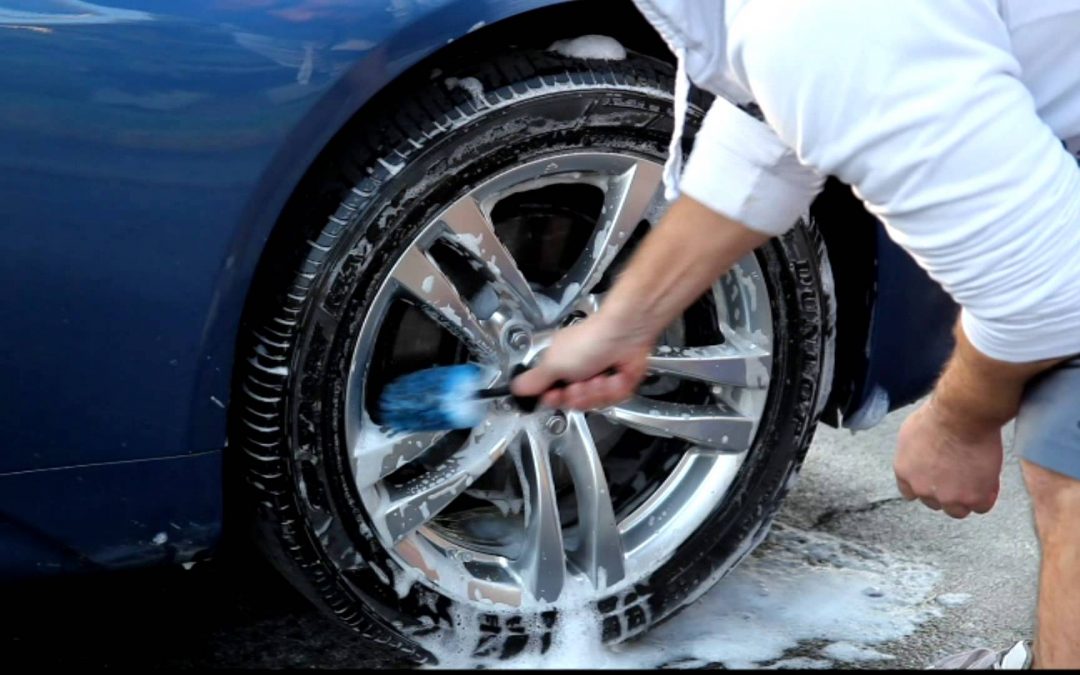 The narrow size of the tire prevents such pressure from being created. Humps (sides on the disk that do not allow the tire to get off inward) are located far from the tire beads, therefore, you have to resort to various non-standard methods.
The narrow size of the tire prevents such pressure from being created. Humps (sides on the disk that do not allow the tire to get off inward) are located far from the tire beads, therefore, you have to resort to various non-standard methods.
There are two options: seal the missing space with an auxiliary chamber or resort to an explosion. The second option is simpler and more technologically advanced. He, in turn, has two methods: explosive pumping (booster) and setting fire to a flammable liquid. In the first case, air is pumped into a cylindrical receiver with a volume of about 20 liters, after opening the valve of which, within a tenth of a second, it enters the tire, inflating it. When ignited, high pressure is created by the expansion of instantly heated air. Gasoline (or another flammable liquid) is applied to the entire circumference of the inner rim of the disk and set on fire with a torch. At the same time, air is supplied through the nipple, which does not allow the tire to jump back to its original position after the explosion. After the tire has taken the desired position on the rim of the disk, the operating pressure is set from 2.5 to 4 atmospheres.
After the tire has taken the desired position on the rim of the disk, the operating pressure is set from 2.5 to 4 atmospheres.
+ less tendency to break under lateral loads
+ the ability to take out the disks from the wheel arches while maintaining the track
+ reduction of the height of the profile when preloaded
+ lower cost of narrow tires compared to wide
+ the ability to lower the car more
+ visual enlargement of the disk
- lack of protection of disks from curbs
— high requirements for the condition of tires
- Less ride comfort
- more labor-intensive installation procedure
- high probability of disassembly in case of pressure loss
- increased load on the tire profile
practice
Articles / Practice Stop on demand: what breaks in the brake master cylinder Everyone used to know what a master brake cylinder (or just a GTZ) is.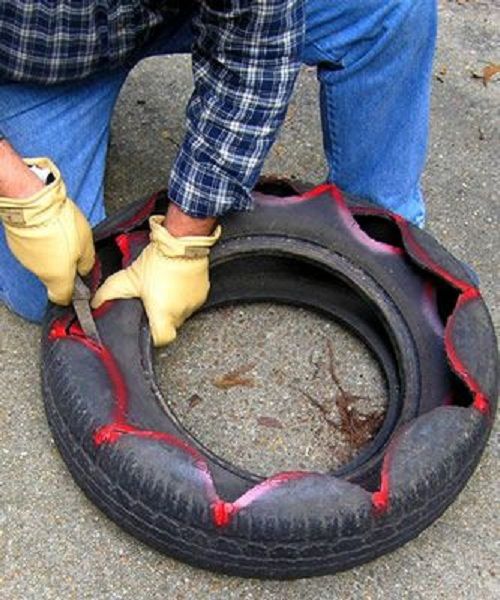 Now they remember him much less often: the GTZ has noticeably increased reliability, and on new machines it practically does not fail .... 4190 one 10/14/2022
Now they remember him much less often: the GTZ has noticeably increased reliability, and on new machines it practically does not fail .... 4190 one 10/14/2022
Articles / Travel Air sellers: how cunning businessmen make money in lines at the borders The past two weeks have been marked by huge queues of cars at the borders of Russia and neighboring countries. And where there are queues, difficulties and excitement, there are always those who want to catch... 6290 5 10/14/2022
Articles / Used cars Range Rover Evoque I with mileage: durable suspension, the right oil and no Ford engines We have already praised the Range Rover Evoque for its stainless body, scolded the unimportant multimedia and blamed the models for capricious electrics. It's time to figure out which motors to avoid... 2026 0 2 10/13/2022
It's time to figure out which motors to avoid... 2026 0 2 10/13/2022
Test drives / Test drive Haval Dargo vs Mitsubishi Outlander: the dog is barking, the stranger is coming In the Haval dealership in the south of Moscow, life is in full swing: buyers look at cars, communicate with managers and sign some papers. While I was waiting for the test Dargo, the same cross... 13502 7 175 13.09.2022
Test drives / Test drive Motor from Mercedes, emblem from Renault, assembly from Dacia: test drive of the European Logan 1. 0 It would seem that what's new can be told about the second generation Renault Logan, known to every Russian taxi driver, as they say, up and down? However, this car has... 11706 ten 41 08/13/2022
0 It would seem that what's new can be told about the second generation Renault Logan, known to every Russian taxi driver, as they say, up and down? However, this car has... 11706 ten 41 08/13/2022
Test drives / Test drive Geely Coolray vs Haval Jolion: Free Cheese? If! Do you want to buy a car today with a full warranty, on credit at an adequate rate, without wild dealer markups? Now this is still a task, because a full-fledged chain of "representation - s... 8647 25 thirty 08/10/2022

This method is mainly used to repair tire side cuts or to repair serious damage to the tread of a truck tire. Any motorist or professional driver knows the moments when, during a collision with a sharp object, a curb or a pothole at high speed, mechanical damage to the tire structure occurs. It can be a tear, a side cut, a tread cut or a hernia, as drivers call it. If this happens to you, do not rush to get rid of damaged tires. The company is ready to help you restore your tires to working condition using hot vulcanization. What is this process? To bond damaged rubber material, high temperature is used. To do this, you must pre-process the fastened part. After that, a plastic mixture is used, which is applied to damaged areas. Hot vulcanization is carried out using an electric vulcanizing press. When heated to + 200 ° degrees, the adhesion of the masses into one whole occurs. The duration of the vulcanization process depends on two factors: the temperature regime and the thickness of the surfaces to be joined. After connection, cooling is a prerequisite. The most reliable and effective way to repair tires is hot vulcanization, since this achieves the strongest joint formed, which prolongs the performance of the tires.0011
The duration of the vulcanization process depends on two factors: the temperature regime and the thickness of the surfaces to be joined. After connection, cooling is a prerequisite. The most reliable and effective way to repair tires is hot vulcanization, since this achieves the strongest joint formed, which prolongs the performance of the tires.0011
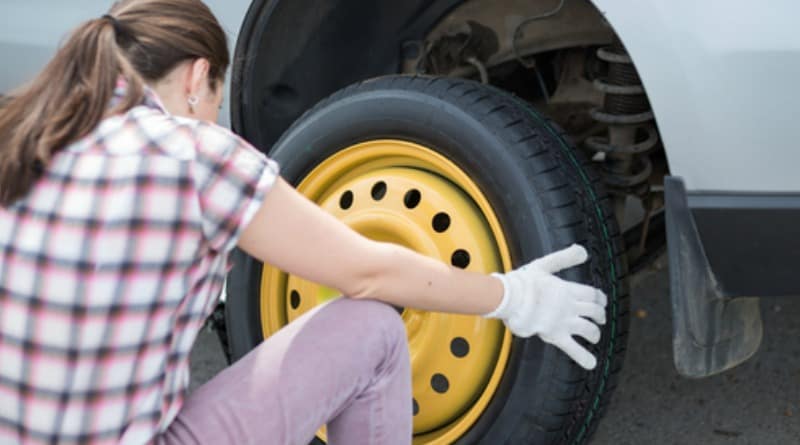 such breaks can be places of stress concentration. It is important to observe every detail in order for the tire repair to be successful. The machine must be low-revving from 2000 to 4000 rpm.
such breaks can be places of stress concentration. It is important to observe every detail in order for the tire repair to be successful. The machine must be low-revving from 2000 to 4000 rpm.  Because the lack of it will create vulcanization without pressure and the quality of the service provided will be low. The applied excess raw rubber will force you to additionally clean the outside, removing the excess after the procedure is completed.
Because the lack of it will create vulcanization without pressure and the quality of the service provided will be low. The applied excess raw rubber will force you to additionally clean the outside, removing the excess after the procedure is completed. As you can see, in our tire center we do everything right and according to technology. Not many tire shops offer a guarantee on their work. We give a guarantee for any repairs performed by our masters.
If everything is done according to technology, according to all the rules, then the connection is strong and reliable. However, there are also drawbacks to this method. Deficiencies can result in delamination of patches, bulging or serious damage to the tire. Therefore, before starting tire repair, it is necessary to assess the complexity of the damage and the location. It is better to immediately turn to real masters than to throw away the exfoliated tire later.
However, there are also drawbacks to this method. Deficiencies can result in delamination of patches, bulging or serious damage to the tire. Therefore, before starting tire repair, it is necessary to assess the complexity of the damage and the location. It is better to immediately turn to real masters than to throw away the exfoliated tire later.
Hot vulcanizing is not only used for repairing tire side cuts. This is the most optimal way for enterprises that have conveyor belts in stock. The hot vulcanization process itself is as close as possible to the conveyor belt manufacturing technology and the strength of the joint during this process practically corresponds to the strength of the belt.
The price is highly dependent on the size of the lateral cut or hernia. In our tire workshop, the price for this service starts from 1200 rubles (hot vulcanization itself). In addition to it, you must pay for the installation of the patch. Prices for the installation of patches and patches can be found here.
Prices for the installation of patches and patches can be found here.
Many people ask the question: “What should I do if a hernia appears on the wheel? Can you drive with a herniated tire? Why is this hernia dangerous? The best answer is to turn to the hot vulcanization method and remove the hernia from the tire. But let's go in order.
1. What causes a hernia on a wheel?
Hernia occurs in two cases. First: when the layers of rubber are delaminated, and air enters between the layers. From this case, you can easily insure yourself by buying high-quality rubber. Manufacturers of cheap rubber save on everything they can, so it's not surprising that the layers of this rubber delaminate. It happens the same way when a tire hits a bump or edge of a pit. The second case is when a cord breaks inside the tire. Such a hernia also appears from hitting a bump, the edge of a pit, or something similar. At the moment of impact, the cord inside the tire bursts, and the rubber stretches. After that, the cord no longer holds back the stretched rubber and it is not able to independently maintain pressure inside the tire. The rubber begins to swell, and, as a result, we see this swelling on the tire, which is called a hernia in the common people.
After that, the cord no longer holds back the stretched rubber and it is not able to independently maintain pressure inside the tire. The rubber begins to swell, and, as a result, we see this swelling on the tire, which is called a hernia in the common people.
2. Can I drive with a herniated tire?
Of course not. The fact is that a hernia can burst at any time. Even if the wheel is just standing still, the pressure inside the tire is constantly acting on the hernia of the wheel and gradually inflates it. If you are moving at speed, then any pits and impacts on the wheel lead to sharp compressions, and this increases the pressure. You are in danger of flying into a ditch or into oncoming traffic if a wheel bursts. If you have a spare tire, it is better to put it on right away, and take the swollen wheel for repair. If there is no spare tire, drive at a minimum speed to the nearest tire shop, where there is a hot curing unit.
3. Can a herniated wheel be removed?
Of course you can. For this, there is a method of hot vulcanization. The process of hernia removal is identical to the repair of side cuts. First, the hernia is cut out with a margin of several centimeters. It must be cut to an intact cord and not stretched rubber without delamination. This is followed by all the same points as when repairing side cuts: the same thorough cleaning, roughening, processing and cleaning, choosing a patch and attaching it from the inside of the tire, applying a layer of raw rubber on top, and the process itself on the machine. In general, with the correct observance of all the technique of the process, the removal of hernias is not only possible, but also carried out with the guarantee that a hernia will not occur again. In our tire service, we do all the work with high quality and give a guarantee for all types of repairs, both side cuts and hernia repair.
For this, there is a method of hot vulcanization. The process of hernia removal is identical to the repair of side cuts. First, the hernia is cut out with a margin of several centimeters. It must be cut to an intact cord and not stretched rubber without delamination. This is followed by all the same points as when repairing side cuts: the same thorough cleaning, roughening, processing and cleaning, choosing a patch and attaching it from the inside of the tire, applying a layer of raw rubber on top, and the process itself on the machine. In general, with the correct observance of all the technique of the process, the removal of hernias is not only possible, but also carried out with the guarantee that a hernia will not occur again. In our tire service, we do all the work with high quality and give a guarantee for all types of repairs, both side cuts and hernia repair.
The most durable docking and recovery method.
Service life after refurbishment is directly related to working conditions.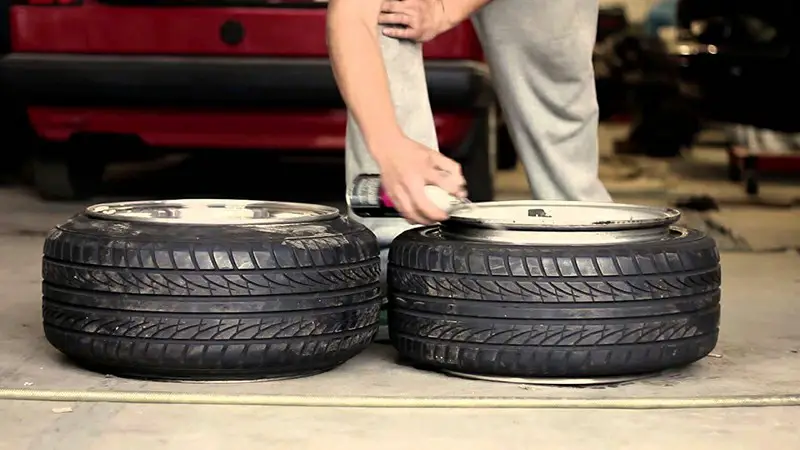
After restoration, the product has almost the same service life as before repair.
The butt joint is very flexible and close to the original in flexibility.
Hot vulcanization of materials is possible at any time of the year, even at negative temperatures, which is very typical for our regions.
Using hot technology, a uniform product thickness can be achieved.
Possibility to work in conditions of increased pollution.
Low cost compared to cold process vulcanization.
Use of expensive, bulky and heavy specialized equipment.
Working on such a press requires certain skills and a high degree of qualification of the operating personnel.
Availability of an industrial network from 220 V to 380 V.
You can order a hot vulcanization service by contacting our company. Experienced craftsmen are ready to provide prompt assistance in retreading truck tires using hot working methods, repair side cuts, and repair the edges of the conveyor belt directly at your enterprise.